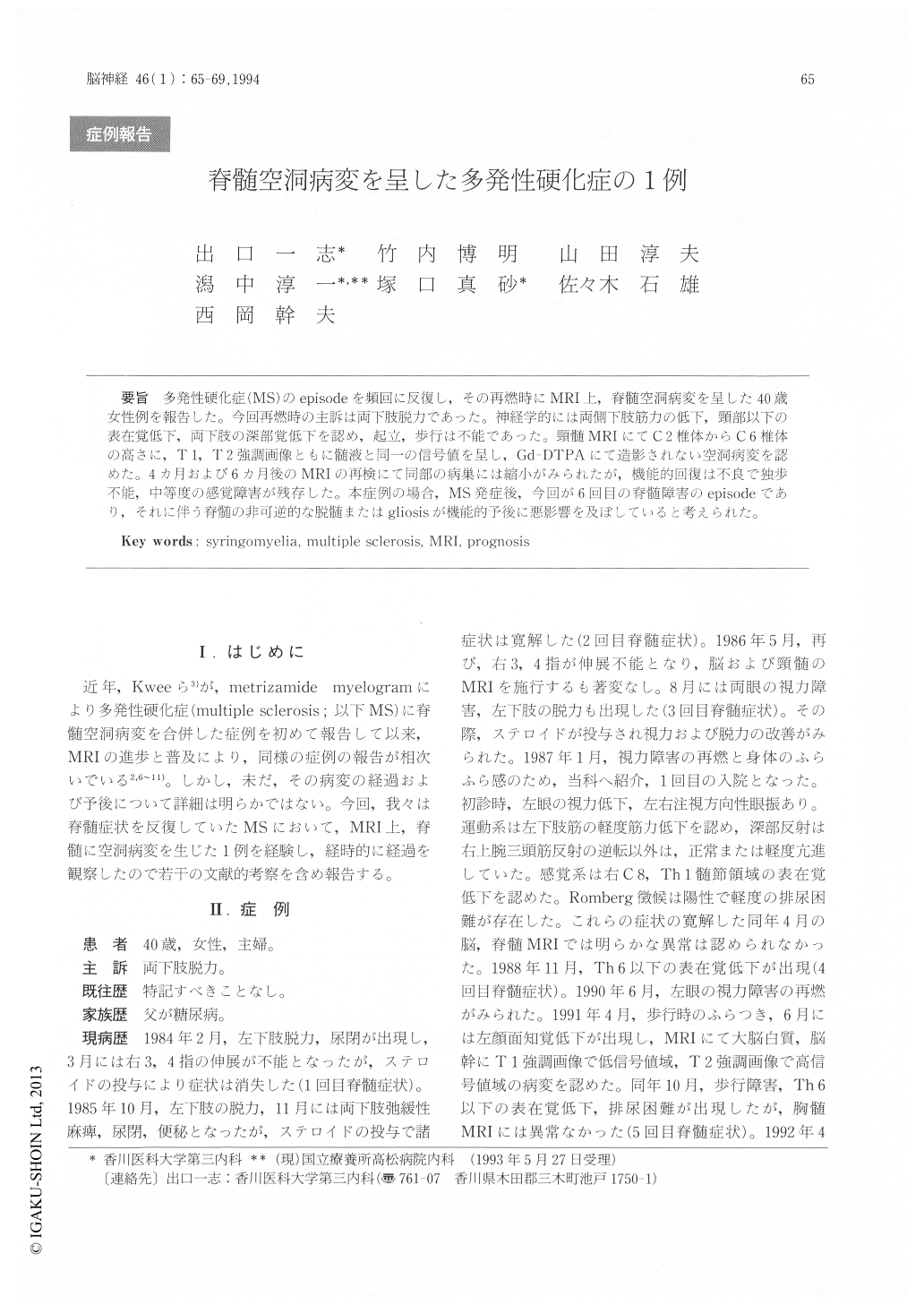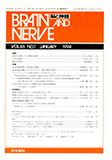Japanese
English
- 有料閲覧
- Abstract 文献概要
- 1ページ目 Look Inside
多発性硬化症(MS)のepisodeを頻回に反復し,その再燃時にMRI上,脊髄空洞病変を呈した40歳女性例を報告した。今回再燃時の主訴は両下肢脱力であった。神経学的には両側下肢筋力の低下,頸部以下の表在覚低下,両下肢の深部覚低下を認め,起立,歩行は不能であった。頸髄MRIにてC2椎体からC6椎体の高さに,T1,T2強調画像ともに髄液と同一の信号値を呈し,Gd-DTPAにて造影されない空洞病変を認めた。4ヵ月および6ヵ月後のMRIの再検にて同部の病巣には縮小がみられたが,機能的回復は不良で独歩不能,中等度の感覚障害が残存した。本症例の場合,MS発症後,今回が6回目の脊髄障害のepisodeであり,それに伴う脊髄の非可逆的な脱髄またはgliosisが機能的予後に悪影響を及ぼしていると考えられた。
A 32-year-old woman experienced subacute onset of weakness in her left leg, urinary retention and difficulty in extending her right middle and third finger. She subsequently suffered episodes of myelopathy, optic neuritis and cerebellar ataxia over a period of several years. Brain MRI showed multiple areas of high signal intensity on T2-weight-ed images, consistent with multiple sclerosis (MS). However spinal MRI revealed no abnormal findings. In her most recent episode, at age 40 she developed paraparesis.

Copyright © 1994, Igaku-Shoin Ltd. All rights reserved.


